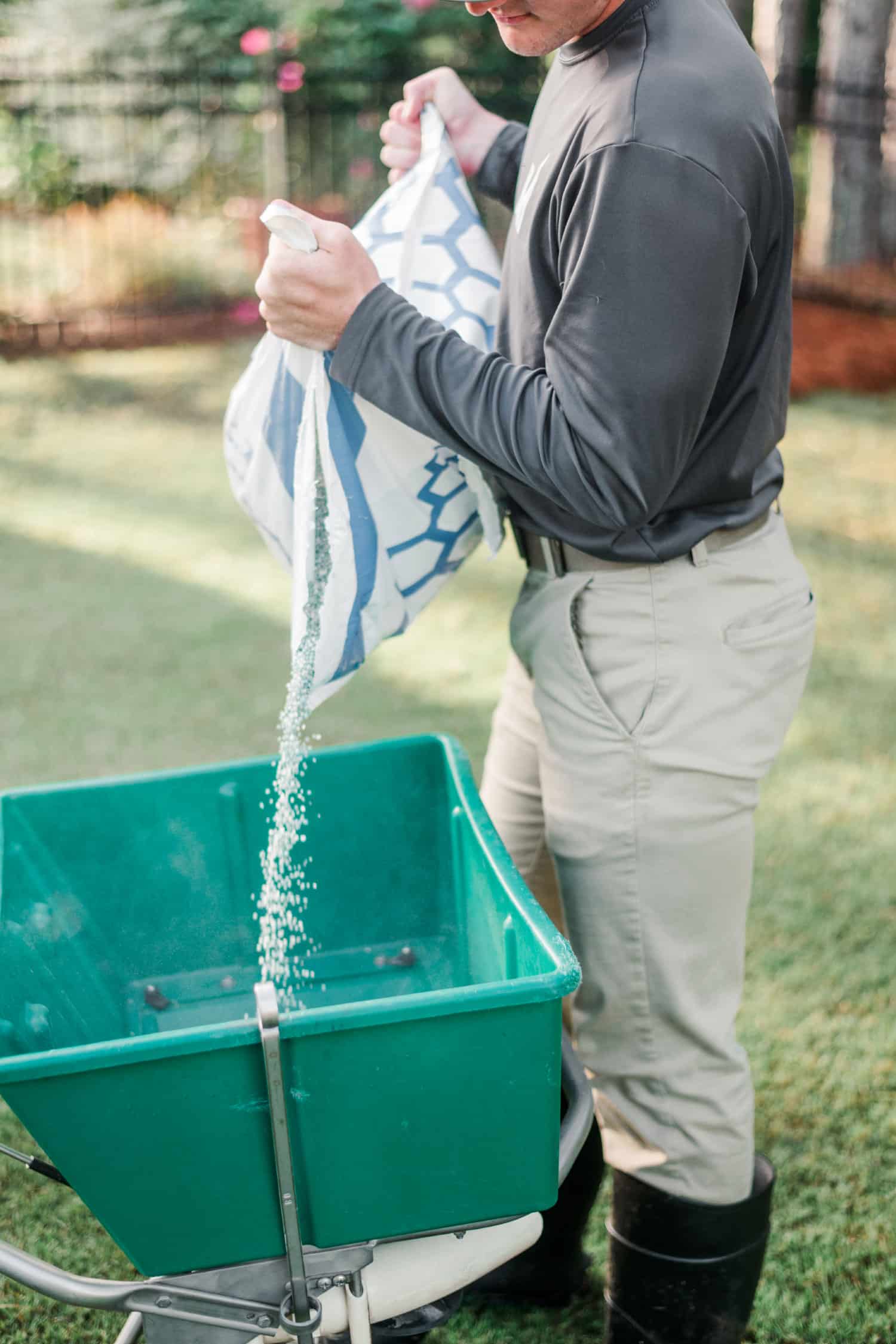Plant nutrition can seem like a bit of a mystery. Scheduling treatments to be applied while the turf is dormant can also seem a little mysterious. You may have questions about which nutrients could be beneficial and how dormant turf could possibly use them. At Nature’s Turf, our 9-round program is not only based on weed control strategy but also the timely application of nutrients. Read on to learn about beneficial nutrients, specifically nitrogen, phosphorus, and potassium, and the best times of the year to apply them to your lawn.
What Nutrients Does My Grass Need?
All plants require the same sixteen nutrients in varying amounts. These are split into two primary groups: macronutrients and micronutrients. Of the macronutrients, the ones most often deficient in lawns are nitrogen, phosphorus, and potassium, the analysis of which is required to be posted in large numbers on bags of fertilizer. An example of the macronutrient numbers on a bag is 10-10-10; this means that particular bag of fertilizer contains 10% nitrogen, 10% phosphorus, and 10% potassium.
Nitrogen is the macronutrient with the most fanfare. It’s the nutrient required in the highest quantity by our turfgrasses, and it yields quick, visual results when applied during the growing season. Depending on the nitrogen source used, a visible color change can be seen within days. Phosphorus and potassium don’t get the same adulation because they don’t create the same, rapid visual response, but they are fundamental to plant growth, health, and hardiness.
Does My Lawn Need Phosphorus (P)?
Phosphorus is imperative for root formation and cell wall strength. That’s why the middle number on a “starter” fertilizer is generally higher than the middle number on a bag of fertilizer meant for established lawns. Phosphorus also has fundamental uses beyond root establishment. Without venturing too deeply into the science, phosphorus’ presence is necessary for a plant’s ability to store and use energy. It’s part of the photosynthetic process that harvests sunlight and creates sugar, and it is also part of a process called respiration that uses that created sugar. Without adequate phosphorus, these processes can’t occur, efficiency dwindles, and plant health suffers.
Phosphorus is naturally deficient, and the phosphorus that is present is frequently bound to the soil structure. Our Georgia red clay does a great job of sequestering phosphorus and is also naturally acidic. By treating with limestone to maintain a range in which phosphorus is available, and by supplementing the available P, we give the plants what they need to thrive.
Does My Lawn Need Potassium (K)?
Potassium generally enters the conversation right after nitrogen in the hierarchy of plant nutritional requirements. Turfgrasses often use a lot of it, and for good reason. It is exceptionally important to root health, cell wall rigidity, turgor pressure, and overall hardiness in adverse conditions like drought and freezing weather. Potassium contributes by being a key player in protein synthesis and as a catalyst for enzyme activation, among other functions.
Like phosphorus, potassium is often deficient in our soils. Excess potassium is soluble and moves well with water. Fortunately, potassium doesn’t seem to be a pollution risk to humans, wildlife, or the environment. Much the same as phosphorus, as soil pH decreases, K that isn’t in excess is rapidly held by soil, making it unavailable.
Why Timing in January/February Matters
Applying our rootzone fertilizer in January serves a couple of key purposes. First, and most importantly, it is a great time to adjust for soil deficiencies. Directly following a maintenance load of limestone, the rootzone of our soils should be in prime range, allowing for optimal root health and nutrient availability as spring temperatures approach in a few short weeks.
Secondly, these tend to be some of our coldest weeks. Much of our program is sprayed using specialized equipment, and our products are mixed in water. On our coldest mornings, we sometimes face freezing that would slow or stop our production. Timing a dry round like this one allows us to keep consistent scheduling, which is important for both turf health and the control of pesky winter weeds like Poa annua.
Important Takeaways:
- All plants require the same sixteen nutrients in varying amounts. The nutrients required in the highest quantities are Nitrogen, Phosphorus, and Potassium. These are the 3 large numbers required to be posted on a bag of fertilizer.
- Phosphorus is imperative for root formation and cell wall strength. It also plays key roles in the creation and use of energy in plants.
- Potassium is exceptionally important to root health, cell wall rigidity, turgor pressure, and overall hardiness in adverse conditions such as drought and freezing weather. It contributes by being a key player in protein synthesis and as a catalyst for enzyme activation among other functions.
- Applying our rootzone fertilizer in January serves a couple of key purposes. The prime time to correct deficiencies is when we are heading into spring.Applying these nutrients in January/February also enables us to keep moving in those cold months, treating your property when it matters for plant health and weed control.
- If you have questions about which nutrients to apply to your lawn and when to apply them, give us a call at 678-831-6343 or email us at Nature’s Turf.








